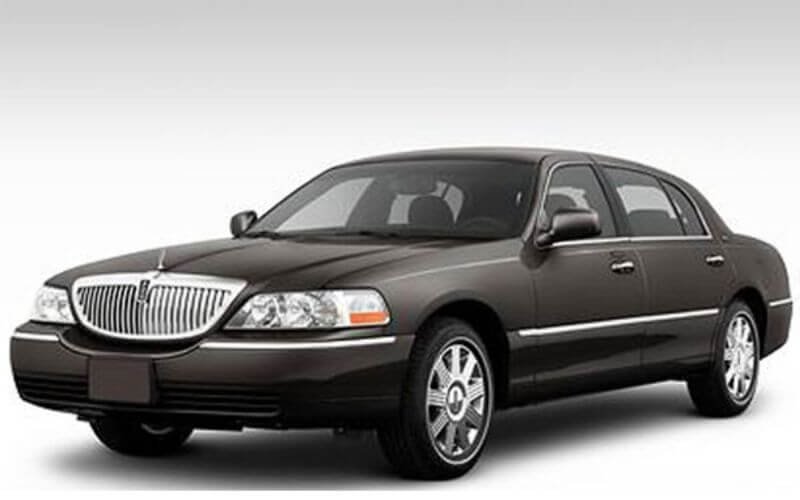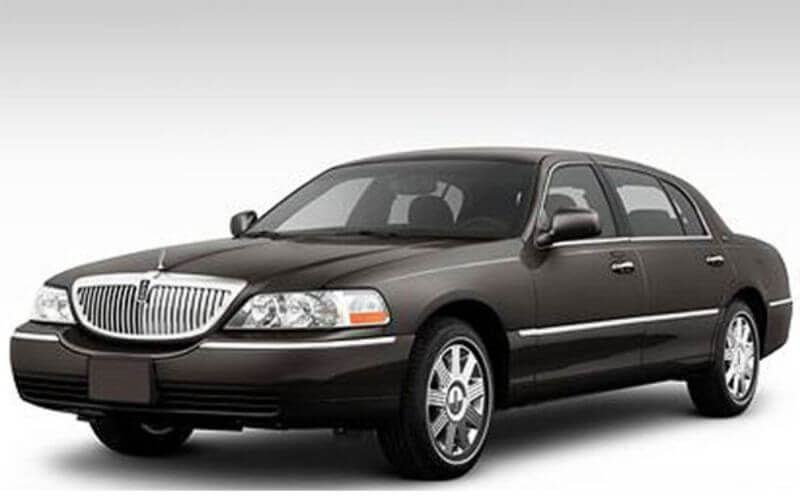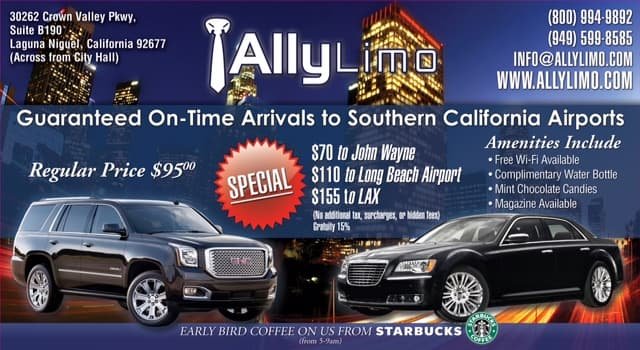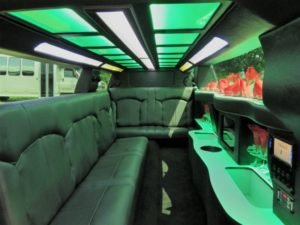Have you ever wondered if a sedan can be considered a limo? Well, here’s a surprising fact for you: a sedan and a limo are not the same thing. While they may appear similar in terms of size and shape, there are distinct differences between the two.
A sedan is a type of four-door passenger car with a conventional trunk, typically designed to comfortably accommodate a small family or a group of friends. On the other hand, a limo, short for limousine, refers to a luxury vehicle that is usually longer in length and equipped with amenities like a partition between the driver and the passengers, upgraded seating, and entertainment systems. So, even though a sedan can be a stylish and comfortable car, it does not possess the same lavish features and elegance that are associated with a true limo experience. Understanding the difference between a sedan and a limo can help you make informed decisions when it comes to choosing the perfect ride for your special occasions or events.
Discover the difference between a sedan and a limo, and find out which one suits your needs best! While both vehicles offer comfortable transportation options, there are some key features that set them apart. Sedans are compact, budget-friendly options perfect for daily commutes, while limos provide luxury, spaciousness, and amenities like mini-bars and entertainment systems. So, whether you’re looking for a practical ride or a luxurious experience, understanding the distinctions between sedans and limos will help you make an informed choice.

Is a Sedan a Limo?: Understanding the Differences
Welcome to our comprehensive guide on the differences between a sedan and a limo. While these two types of vehicles may seem similar at first glance, there are distinct characteristics that set them apart. In this article, we will delve into the various aspects of sedans and limousines, exploring their features, uses, and the situations in which one may be preferred over the other. Join us as we navigate through the world of luxury transportation and answer the question: Is a Sedan a Limo?
1. Definition of a Sedan
A sedan is a passenger car with a traditional three-box configuration, consisting of a separate engine compartment, passenger compartment, and cargo trunk. It typically has four doors and a seating capacity of four to five people. Sedans are known for their sleek and elegant design, offering comfort and convenience for everyday commuting, family transportation, or business travel.
These vehicles prioritize practicality and fuel efficiency. Sedans usually come with a range of features, including air conditioning, power windows, and advanced safety technologies. They are designed for on-road driving and offer a smooth and comfortable ride. Sedans are available in various sizes, from compact to full-size, catering to different needs and preferences.
Moreover, sedans are more affordable than high-end luxury vehicles, making them a popular choice for individuals and families looking for a comfortable and reliable means of transportation. However, sedans do not typically offer the same level of luxury and extravagance as limousines.
2. Definition of a Limousine
Contrary to a sedan, a limousine, or simply “limo,” is a luxury vehicle associated with elegance, style, and grandeur. Originally, limousines were stretched or modified sedans, but today they are also purpose-built vehicles. Limousines are typically elongated, allowing for more legroom and extra amenities, such as mini-bars, entertainment systems, and luxurious seating.
Limos have a long-standing reputation as the preferred mode of transportation for special events, such as weddings, proms, and formal parties. They evoke a sense of luxury and sophistication, making them a symbol of prestige and indulgence. Limousines are often equipped with glamorous features like mood lighting, privacy partitions, and even hot tubs. They are designed to provide a first-class experience for a small group of passengers.
Due to their extra length and unique design, limousines require professional chauffeurs for optimal operation and safety. Limos are ideal for occasions that call for a touch of extravagance and a memorable transportation experience. However, their large size and high maintenance costs make them less practical for everyday use compared to sedans.
3. Main Differences: Size, Features, and Purpose
When comparing sedans and limousines, several key differences become apparent. The first significant distinction is size. Sedans are typically compact to full-size vehicles, providing seating for up to five passengers. Limousines, on the other hand, are elongated and can accommodate a larger number of passengers, ranging from six to 20 or more.
Another distinguishing factor is the features offered. While sedans offer comfort and convenience features, limousines take luxury to another level. The stretch design of a limo allows for additional amenities like mini-bars, entertainment systems, partition walls, and custom lighting options.
The purpose of these two vehicle types also sets them apart. Sedans are versatile and designed for everyday use, making them suitable for commuting, family transportation, and business travel. In contrast, limousines are purpose-built for special events and occasions that call for elegance and extravagance. They are often associated with weddings, proms, VIP transportation, and other formal events.
4. Benefits and Uses of a Sedan
Sedans offer several benefits and are well-suited for various uses:
- Practicality: Sedans are practical vehicles designed for everyday use. They are fuel-efficient, easy to maneuver, and provide ample space for passengers and cargo.
- Cost-Effective: Sedans are more affordable than limousines and luxury vehicles. They are a popular choice for individuals and families who prioritize value for money.
- Comfort: Sedans provide a comfortable and smooth ride, ensuring a pleasant driving experience for both short and long distances.
- Convenience: Sedans come with various modern features, including advanced safety technologies, infotainment systems, and connectivity options to enhance the driving experience.
Sedans are commonly used for daily commuting, family travel, business trips, and as rental cars. They are practical choices that balance affordability, comfort, and functionality.
5. Benefits and Uses of a Limousine
Limousines offer unique benefits and are typically used for specialized occasions:
- Luxury: Limousines are synonymous with luxury and extravagance. They are designed to provide a premium experience, with high-end amenities and sophisticated interior features.
- Prestige: Riding in a limousine adds an element of prestige and sophistication to any event. They are often associated with red carpet arrivals, VIP transportation, and extravagant celebrations.
- Memorable Experience: Limousines create lasting memories due to their opulent design and exceptional service. From weddings to prom nights, riding in a limo adds a touch of glamour to any special occasion.
Limousines are primarily used for events such as weddings, proms, bachelor/bachelorette parties, milestone birthdays, and corporate events. They provide a unique and unforgettable experience, surpassing the regular transportation options.
6. Differences in Cost and Availability
One of the significant contrasts between sedans and limousines is the cost and availability. Sedans are widely available for purchase and as rental cars in most areas. Due to their affordability and practicality, sedans cater to a broader range of consumers, making them more accessible.
On the other hand, limousines are generally more expensive to purchase or rent. They require specialized maintenance and professional chauffeurs, adding to the overall operating costs. Limousines are often owned by luxury transportation companies or used by high-profile individuals and organizations for specific events.
7. Sedan vs. Limousine: Which Should You Choose?
Deciding between a sedan and a limousine depends on your specific needs and the occasion you are planning for. If you’re looking for everyday transportation, have a limited budget, or prioritize practicality, a sedan would be the ideal choice. Sedans provide comfort, convenience, and affordability for regular use.
On the other hand, if you’re planning a special event, such as a wedding or prom night, and want to make a grand entrance, a limousine can add that touch of luxury and elegance. Limousines are perfect for creating lasting memories, impressing guests, and enjoying a truly one-of-a-kind experience.
Ultimately, both sedans and limousines serve their purposes excellently. The decision boils down to your personal preferences, budget, and the specific requirements of your occasion or daily transportation needs.
Benefits of Choosing a Sedan:
1. Practicality: Sedans are designed for everyday use, providing practicality and functionality for commuting or family travel.
2. Cost-Effective: Sedans are more affordable compared to luxury vehicles and provide excellent value for money.
3. Comfort: Sedans offer a comfortable and smooth ride, ensuring a pleasant traveling experience.
4. Convenience: Sedans come with modern features such as advanced safety technologies and connectivity options.
Benefits of Choosing a Limousine:
1. Luxury: Limousines provide a lavish and opulent experience with high-end amenities and sophisticated interior features.
2. Prestige: Riding in a limousine adds prestige and sophistication to any event, making it perfect for special occasions.
3. Memorable Experience: Limousines create lasting memories, making them an excellent choice for weddings, proms, and other milestone events.
Conclusion
In summary, the main differences between sedans and limousines lie in their size, features, and purpose. Sedans are practical, affordable, and designed for everyday use, while limousines offer luxury, prestige, and a memorable experience for special events. Both vehicle types have their unique set of benefits and cater to different needs and preferences. When choosing between a sedan and a limousine, consider the occasion, your budget, and the level of luxury and convenience you desire. Whether it’s the practicality of a sedan or the extravagance of a limousine, both provide reliable transportation options to meet your specific requirements.
Key Takeaways: Is a Sedan a Limo?
- A sedan and a limo are different types of cars.
- A sedan is a regular car often used for everyday driving.
- A limo, short for limousine, is a luxurious and elongated car used for special occasions or luxurious transportation.
- Sedans are typically smaller and can seat fewer people compared to limos.
- Limos often have additional amenities and features such as a bar, TV screens, and more spacious interiors.
Frequently Asked Questions
Welcome to our FAQ section where we address common questions about sedans and limos. Here, you’ll find answers to help clear up any confusion you may have about the differences between the two.
1. What is the main difference between a sedan and a limo?
Sedans and limos may look similar at first glance, but their main difference lies in their purpose and size. Sedans are typically smaller, four-door cars designed for everyday personal use, while limos are larger, luxurious vehicles often used for special occasions or chauffeured services.
While both sedans and limos can accommodate passengers, limos are equipped with additional amenities like a mini-bar, entertainment systems, and spacious interiors to provide a more luxurious and comfortable experience.
2. Do all sedans have a partition between the driver and passengers like limos do?
No, it is not common for sedans to have a partition between the driver and passengers like limos do. The partition in a limo is meant to provide privacy for the passengers. In most sedans, the driver and passengers share the same cabin space without any physical barrier.
Sedans are designed with a focus on practicality and everyday use, while the partition in a limo serves as a luxury feature, creating a separate space for the passengers to enjoy their ride in privacy.
3. Can a sedan be considered a mini version of a limo?
Although sedans and limos share some similarities, labeling a sedan as a “mini version” of a limo wouldn’t be entirely accurate. While both vehicles serve as a means of transportation, limos are specifically designed for luxury and comfort, often offering a higher level of amenities and a more lavish experience.
Sedans, on the other hand, are more versatile and suitable for everyday use, focusing on practicality and efficiency rather than luxury. They are typically smaller in size and have a different purpose than limos.
4. Can I convert a sedan into a limo?
While it is technically possible to convert a sedan into a limo, it is a complex process that requires significant modifications and expertise. Converting a sedan into a limo involves extending the chassis, adding extra doors, installing amenities like a partition, and altering the interior layout to create a spacious and luxurious ambience.
This process requires professional knowledge, specialized tools, and extensive customization, making it a costly and time-consuming endeavor. It is worth noting that not all sedans are suitable for conversion into a limo due to structural constraints and design limitations.
5. Which one is more cost-effective, a sedan or a limo?
In terms of cost, sedans are generally more affordable compared to limos. Sedans are designed for everyday use and are available at various price points, making them more accessible to a wider range of budgets.
On the other hand, limos are often rented for special occasions or used for luxury chauffeured services, which can be more expensive due to the additional amenities and the luxurious experience they offer. The cost of a limo rental or ownership includes factors like maintenance, fuel, and specialized services that are not typically associated with sedans.






